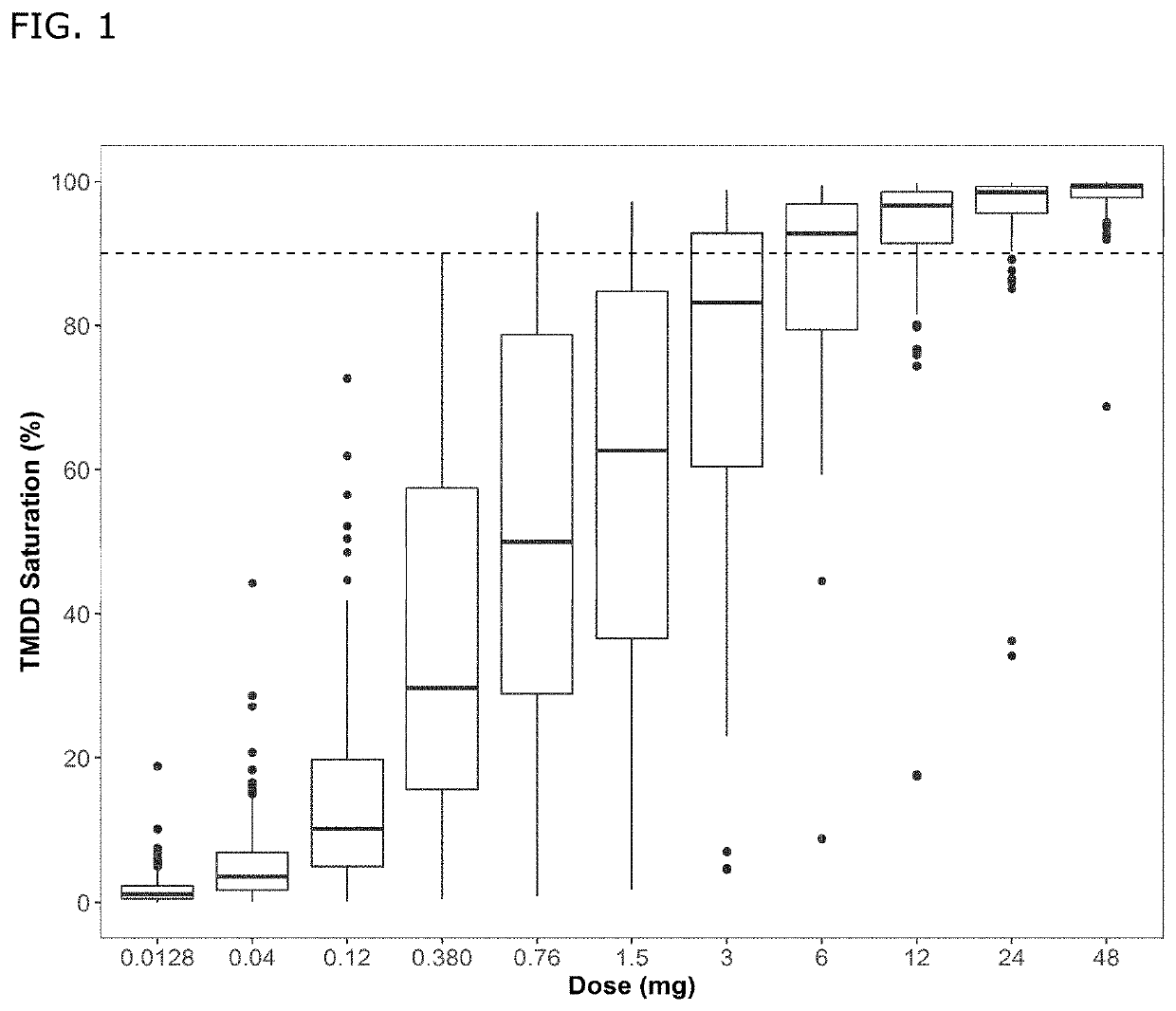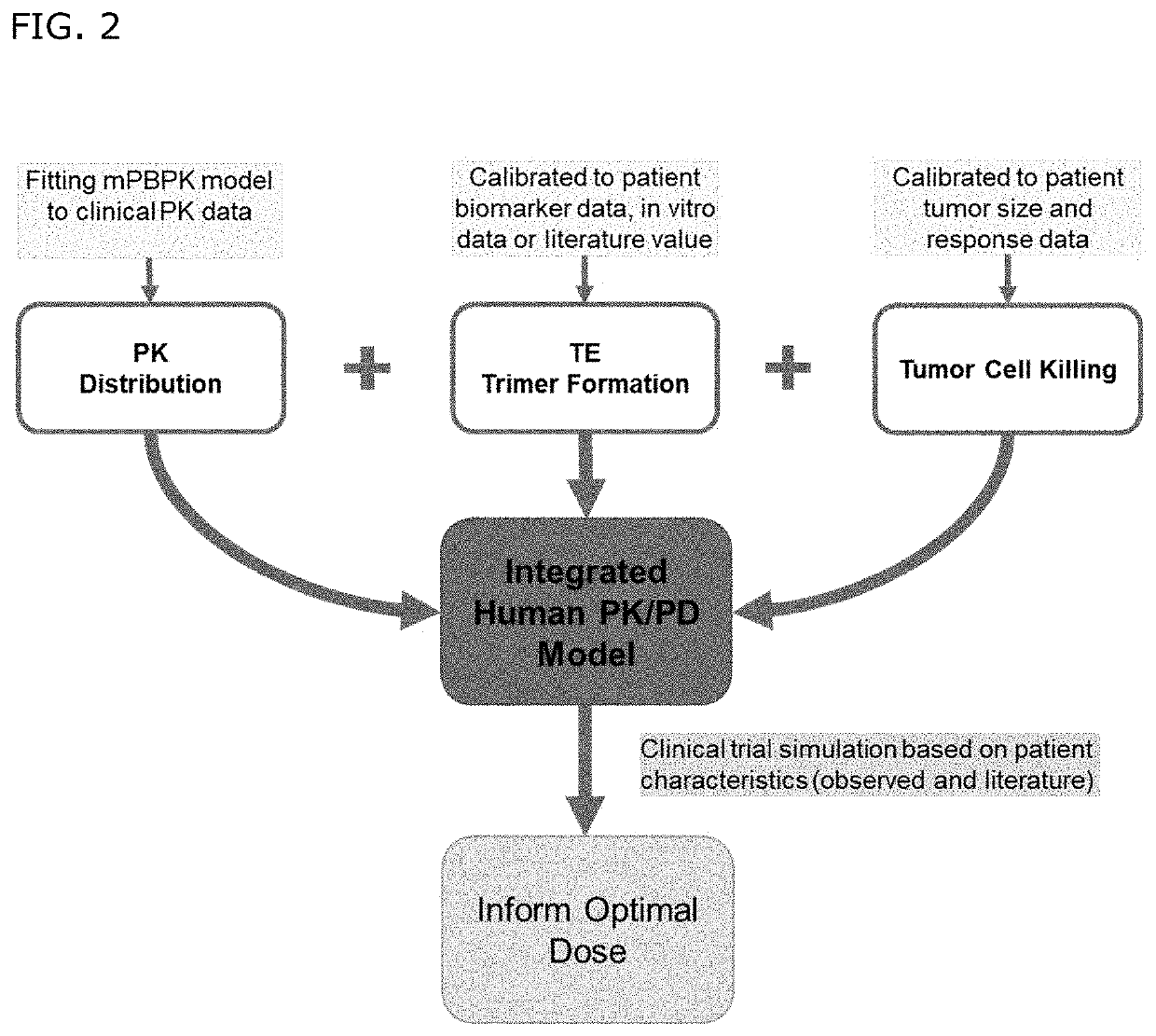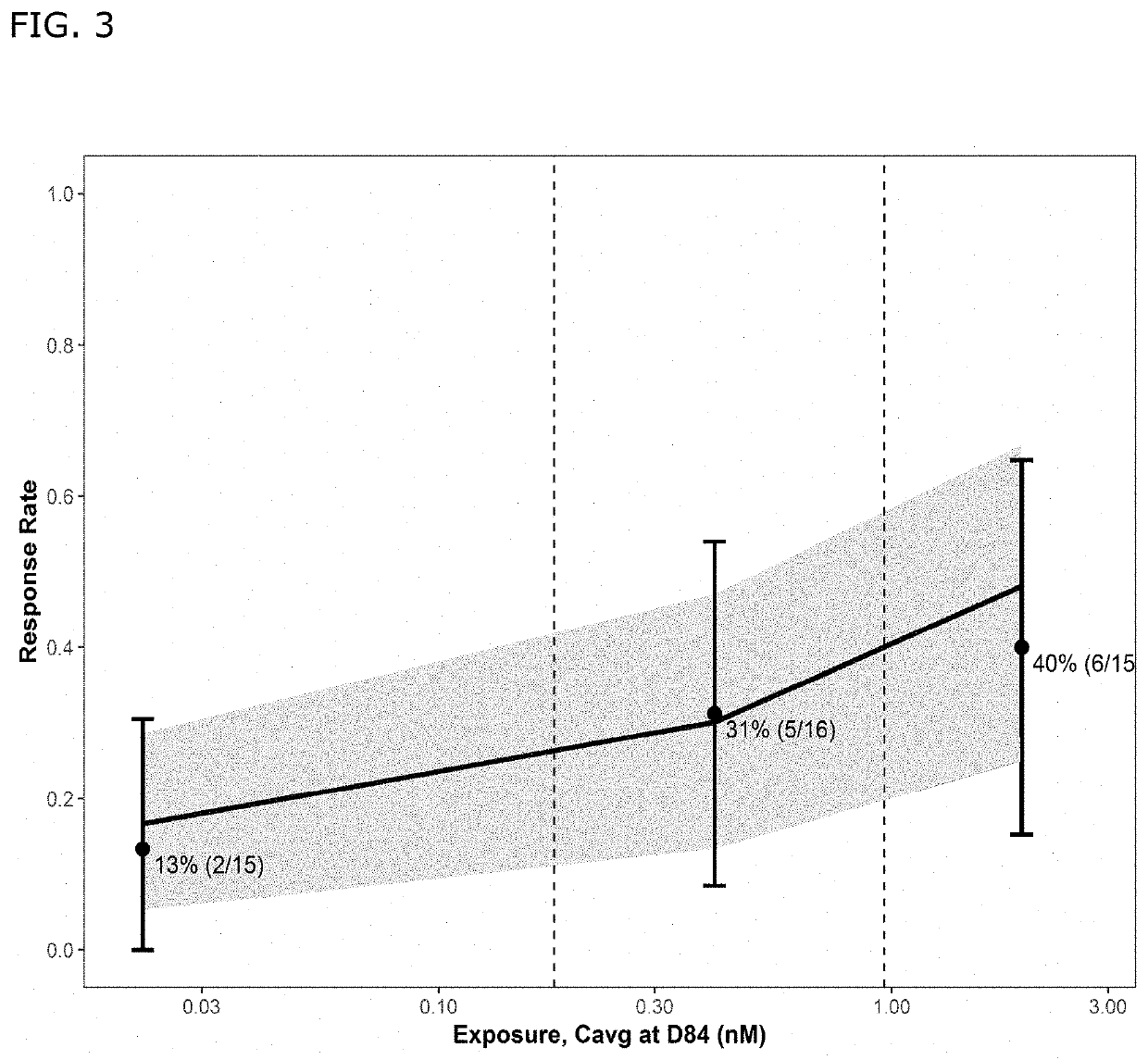Bispecific antibodies against cd3 and cd20
a technology of cd3 and cd20, applied in the field of bispecific antibodies, can solve the problems of low efficacy and disappointing initial clinical studies
- Summary
- Abstract
- Description
- Claims
- Application Information
AI Technical Summary
Benefits of technology
Problems solved by technology
Method used
Image
Examples
embodiments
[0057]In one aspect, the current invention provides for a method of treating a B-cell non-Hodgkin lymphoma (B-NHL) in a human subject, the method comprising administering subcutaneously (sc) to a subject in need thereof, a bispecific antibody comprising[0058](i) a first binding arm comprising a first antigen-binding region binding to human CD3ε (epsilon), comprising a variable heavy chain region and a variable light chain region wherein the variable heavy chain region comprises the CDR1, CDR2 and CDR3 sequences of SEQ ID NO:6; and wherein the variable light chain region comprises the CDR1, CDR2 and CDR3 sequences of SEQ ID NO: 7; and[0059](ii) a second binding arm comprising a second antigen-binding region binding to human CD20, comprising a variable heavy chain region and a variable light chain region wherein the variable heavy chain region comprises the CDR1, CDR2 and CDR3 sequences of SEQ ID NO: 13; and wherein the variable light chain region comprises the CDR1, CDR2 and CDR3 seq...
examples
[0247]DuoBody-CD3×CD20
[0248]DuoBody-CD3×CD20 is a bsAb recognizing the T-cell antigen CD3 and the B-cell antigen CD20. DuoBody-CD3×CD20 triggers potent T-cell-mediated killing of CD20-expressing cells. DuoBody-CD3×CD20 has a regular IgG1 structure.
[0249]Two parental antibodies, IgG1-CD3-FEAL, a humanized IgG1λ, CD3ε-specific antibody having heavy and light chain sequences as listed in SEQ ID NOs: 24 and 25, respectively, and IgG1-CD20-FEAR, derived from human IgG1κ CD20-specific antibody 7D8 having heavy and light chain sequences as listed in SEQ ID NOs: 26 and 27, respectively, were manufactured as separate biological intermediates. Each parental antibody contains one of the complementary mutations in the CH3 domain required for the generation of DuoBody molecules (F405L and K409R, respectively). The parental antibodies comprised three additional mutations in the Fc region (L234F, L235E and D265A; FEA). The parental antibodies were produced in mammalian Chinese hamster ovary (CHO) ...
PUM
| Property | Measurement | Unit |
|---|---|---|
| buffering capacity | aaaaa | aaaaa |
| buffering capacity | aaaaa | aaaaa |
| concentration | aaaaa | aaaaa |
Abstract
Description
Claims
Application Information
 Login to View More
Login to View More - R&D Engineer
- R&D Manager
- IP Professional
- Industry Leading Data Capabilities
- Powerful AI technology
- Patent DNA Extraction
Browse by: Latest US Patents, China's latest patents, Technical Efficacy Thesaurus, Application Domain, Technology Topic, Popular Technical Reports.
© 2024 PatSnap. All rights reserved.Legal|Privacy policy|Modern Slavery Act Transparency Statement|Sitemap|About US| Contact US: help@patsnap.com










